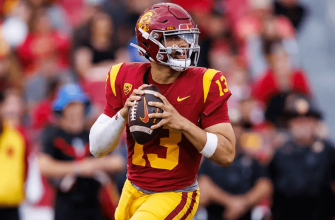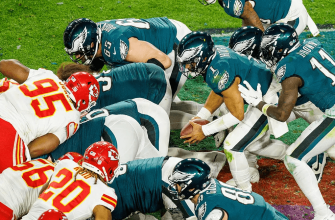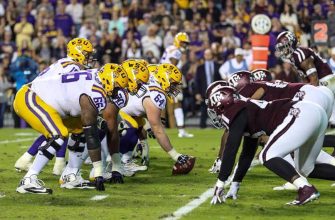Timeouts are an important strategic element in American football. Teams are allowed a limited number of timeouts per half to stop the game clock, which allows players to regroup, coaches to adjust strategy, and officials to correct errors.
Timeouts in football have a set duration and rules for when they can and can’t be used. Knowing how to utilize timeouts effectively can give teams an edge in close games. Football would be a very different game without the ability to pause play for short periods of time.
This article will provide an overview of timeouts in football – how many there are, how long they last, the rules around using them, and some of the strategy involved with timeouts. Whether you’re a casual fan or seasoned coach, understanding the role of timeouts is key to appreciating the game of football.
Number of Timeouts
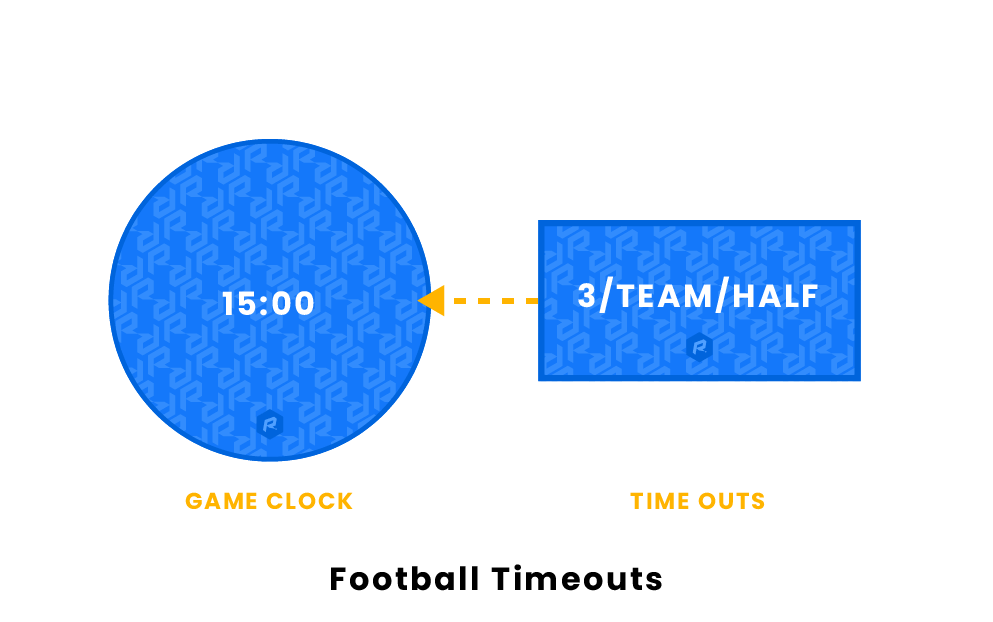
In a standard NFL football game, each team is allowed three timeouts per half. This means each team can call a total of 6 timeouts throughout the course of a game – 3 in the first half, and 3 in the second half.
Teams are not allowed to carry over unused timeouts from the first half to the second half. If a team only uses 2 timeouts in the first half, they still only get 3 timeouts in the second half. Any timeouts not used in a half are lost.
The number of timeouts allotted does not change based on any circumstances like overtime periods. In overtime, each team will have only the timeouts they have remaining from the second half. This means timeout conservation is an important late game strategy for coaches.
Duration of Timeouts
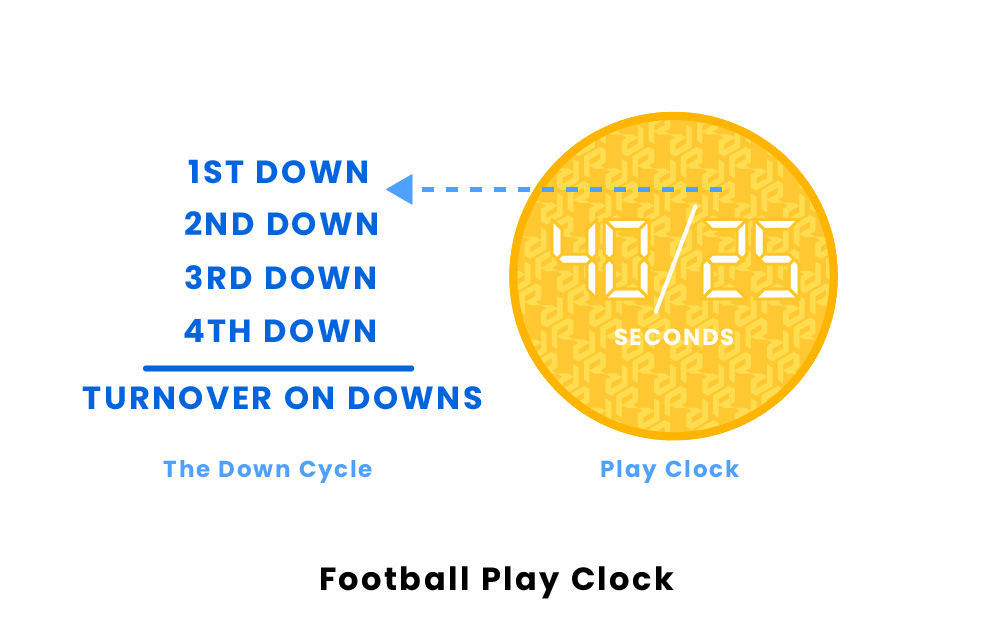
In the NFL, a standard charged team timeout lasts 2 minutes and 5 seconds. Once the timeout is called, a 25-second play clock begins. After it expires, the game clock starts again and runs for 1 minute and 40 seconds. Then there is a 25-second play clock again before the next snap.
So in total, from when the timeout is called to when the ball is snapped after the timeout, it takes 2 minutes and 5 seconds. This duration is the same in college football.
The idea is to provide enough time for teams to talk things over, make substitutions if needed, and strategize, but not too much time that the game flow is disrupted too much. 2 minutes and 5 seconds strikes that balance. It’s enough time to be meaningful for teams but keeps the game moving at a good pace.
Injury Timeouts

Injury timeouts are a critical part of football. Player safety is the top priority, so officials can stop the game at any time if a player appears injured.
The rules for injury timeouts depend on whether the clock is already stopped:
- If the game clock is running, an official will stop the clock and allow the medical staff to evaluate and treat the injured player. This does not count as a team timeout.
- If the game clock is already stopped due to a penalty, challenge, timeout, change of possession, incomplete pass, or end of a quarter, the medical staff can come on the field to check the injury without an official timeout being charged.
In college and high school football, the player must sit out at least one play after an injury timeout. They can only return sooner if the other team called a timeout.
In the NFL, a player evaluation after an injury timeout lasts a maximum of three minutes. The player can return to the game anytime after being cleared by the medical staff. Teams are not charged a timeout for an injury.
If a player appears disoriented or concussed, they will likely be taken to the locker room for further examination before being allowed to return to the game. This emphasizes the NFL and NCAA’s increased focus on the evaluation and treatment of potential head injuries.
Timeout Strategy
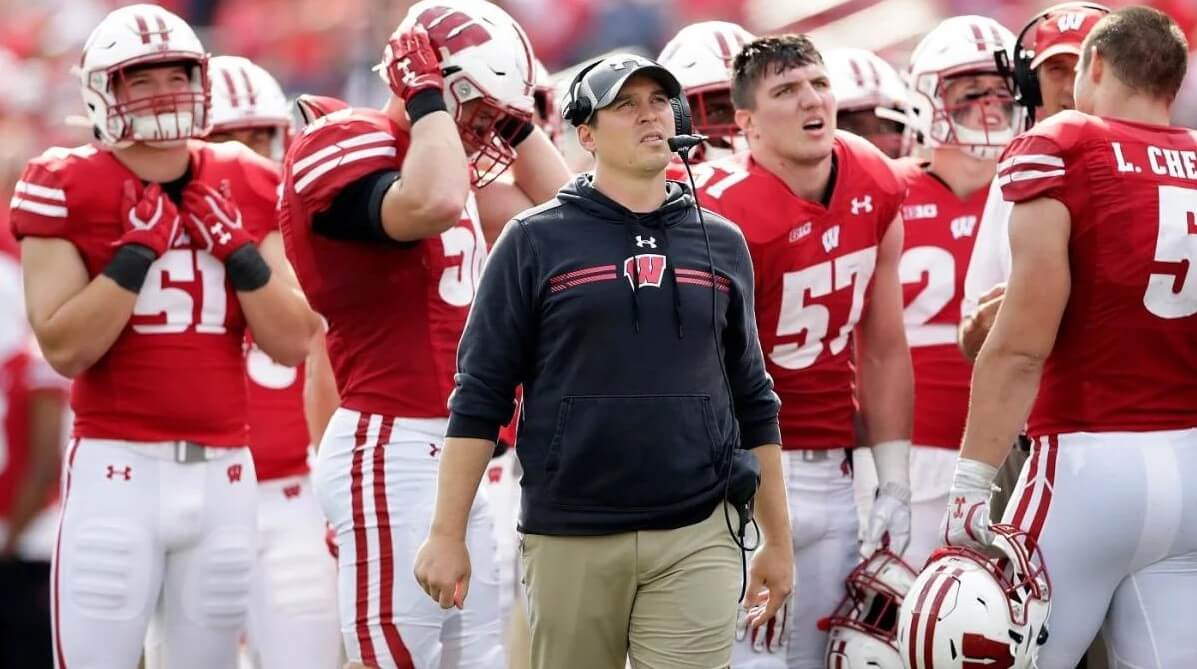
Coaches need to be strategic in using their limited timeouts during a football game. Calling a timeout at the right moment can be the difference between winning and losing.
Some key timeout strategies include:
- Use early timeouts to stop momentum if the other team scores quickly or has a big play. This gives the players a chance to regroup.
- Save at least one timeout for each half to use in late-game or end-of-half situations. These are critical junctures where timeouts allow you to strategize the next play call.
- Call timeout if the play clock is running down and your offense seems disorganized and at risk of a delay of game penalty.
- Take a timeout if the defense looks out of position or confused right before the snap. This allows you to avoid a potentially bad play.
- Use a timeout to ice the kicker right before a potentially game-winning field goal attempt. This adds pressure and makes the kick harder.
- Call timeout to avoid a disastrous turnover or tackle resulting in a big loss. Better to take a timeout than lose yards.
- Take a timeout to set up a specific play or scenario you have practiced, like a Hail Mary pass at the end of a half.
- Burn timeouts at the end of a decided game to stop the clock and avoid running up the score.
Knowing the best times to pause the action with a timeout is an invaluable skill for football coaches. Using timeouts wisely can make the difference in close games.
Charged Team Timeouts

In football, each team is allowed a limited number of timeouts per half. When a team calls a timeout, it is considered a “charged team timeout.”
Here are the key rules around charged team timeouts:
- Each team gets 3 charged timeouts per half in the NFL, and 2 per half at other levels like college, high school, etc.
- The timeouts do not carry over between halves
- Only players on the field or the head coach can request a timeout. Assistant coaches and players on the sideline cannot call a timeout.
- To request a timeout, a player must make a “T” sign with their hands, while the head coach must call timeout verbally to one of the officials.
- The official will then signal for the clock to stop and the timeout to begin. At this point, the timeout is considered charged to that team.
- The timeout lasts for 60 seconds from when the official signals it to begin. During this time, coaches can meet with players to discuss strategy.
- If a team tries to call a timeout when they have no timeouts remaining, they will be charged with a 5-yard delay of game penalty.
- After a timeout, the clock starts again on the next snap or when the ball is marked ready for play by the official.
- Timeouts stop the game clock but do not stop the play clock, which will continue running down after 40 seconds.
- Teams cannot call back-to-back timeouts without a play in between. Attempting back-to-back timeouts results in a 5-yard delay of game penalty.
So in summary, calling a timeout when you have them remaining stops the clock so teams can strategize, but they are a limited resource to manage wisely over the course of a game.
Official’s Timeouts
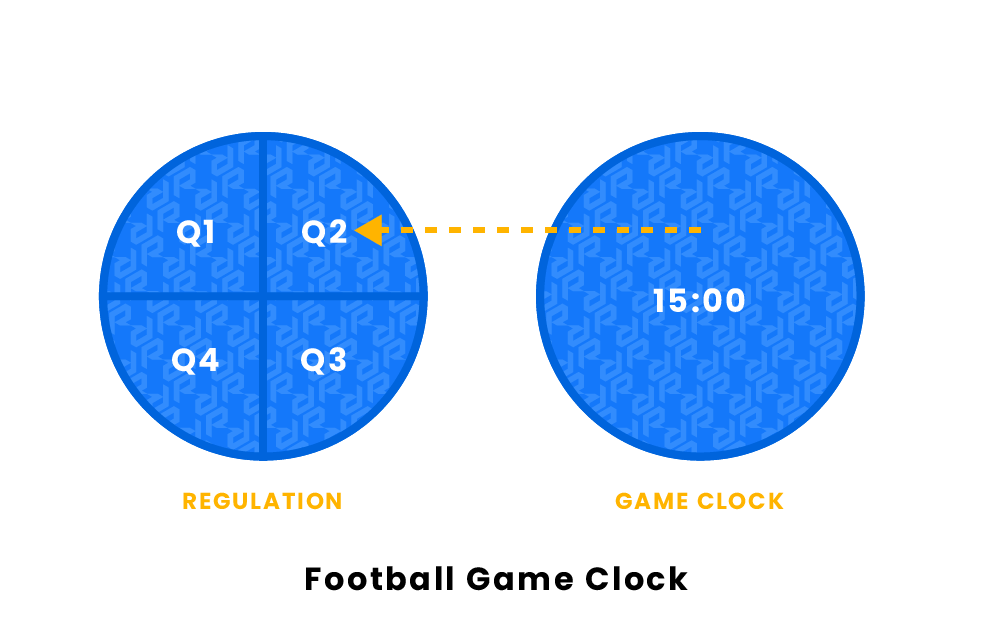
The officials in a football game have the ability to stop play and call an official’s timeout in certain situations. This allows the officials to handle administrative duties and maintain control of the game when needed.
Some common situations where an official may call a timeout include:
- Injuries – If a player suffers an injury on the field, the officials will stop play immediately and call an injury timeout so medical staff can attend to the player. This allows the injury to be properly assessed and treated.
- Measurement – When a team requests a measurement to see if they gained a first down, the official will stop play to bring out the chains and measure the distance.
- Penalty discussions – If there is confusion over the proper penalty to assess after a foul, the referee may call an official’s timeout to confer with other officials and ensure the right call is made.
- Equipment issues – Problems with equipment like a broken chin strap may require the officials to stop play until the equipment is fixed.
- Crowd noise – Excessive crowd noise can delay the game, so officials may call timeout to quiet the fans and allow play to continue.
- End of period – At the end of a quarter, officials will call timeout to stop play so teams can change ends of the field.
So in summary, officials are empowered to stop play at their discretion to handle administrative responsibilities, correct errors, prevent delays, and maintain proper game management. Official’s timeouts allow the referees to control the pace and flow of the game.
Timeout Penalties
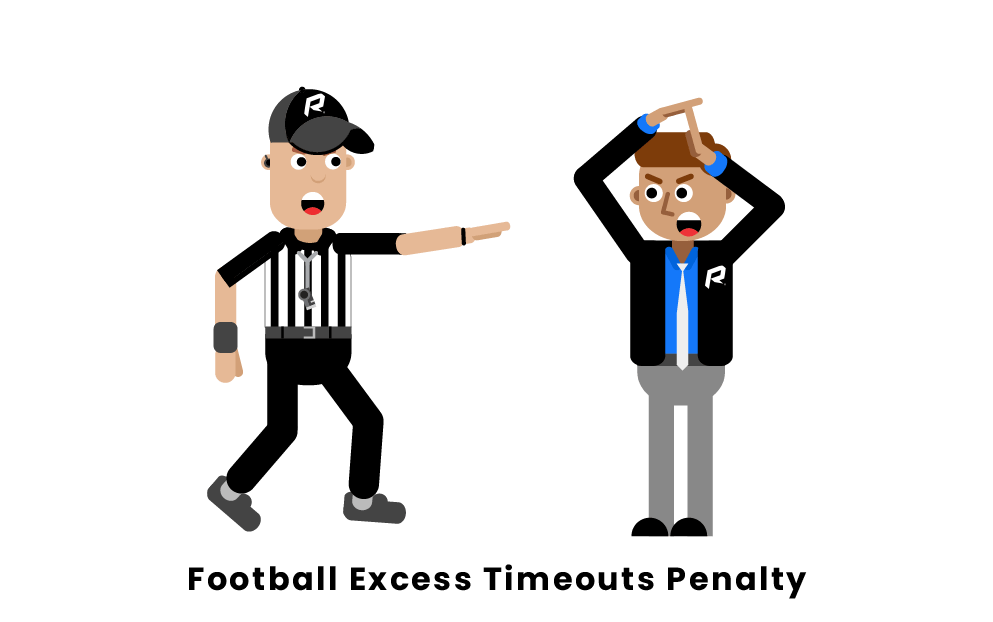
In football, each team is only allowed a certain number of timeouts per half. Calling more timeouts than are permitted results in a 5-yard penalty for the team.
This penalty is assessed if a team attempts to call a timeout when they have no remaining timeouts. For example, if a team has used all three of their timeouts in the first half, and they try to call another timeout, they will be flagged for a 5-yard penalty.
The penalty is also assessed if a team calls back-to-back timeouts without running an intervening play. Even if a team has timeouts remaining, they cannot call two timeouts in a row without being penalized.
This rule prevents teams from abusing timeouts to gain an unfair advantage. The timeouts are meant to be strategic, not excessive. Teams must properly manage their allotted timeouts over the course of the game.
The five-yard penalty for excess timeouts is enforced from the succeeding spot. This means the penalty will be marked off where the next play would start if there was no foul.
This penalty can have significant implications late in a close game if a team desperately tries to stop the clock by calling extra timeouts they don’t have. The yardage penalty could impact their ability to tie or take the lead on their final drive.
Proper timeout management is an important skill in football. Coaches must strategically use their limited number of timeouts over the course of the game. Trying to call extra timeouts beyond the permitted amount results in a penalty that can be very costly.
Timeout Variations
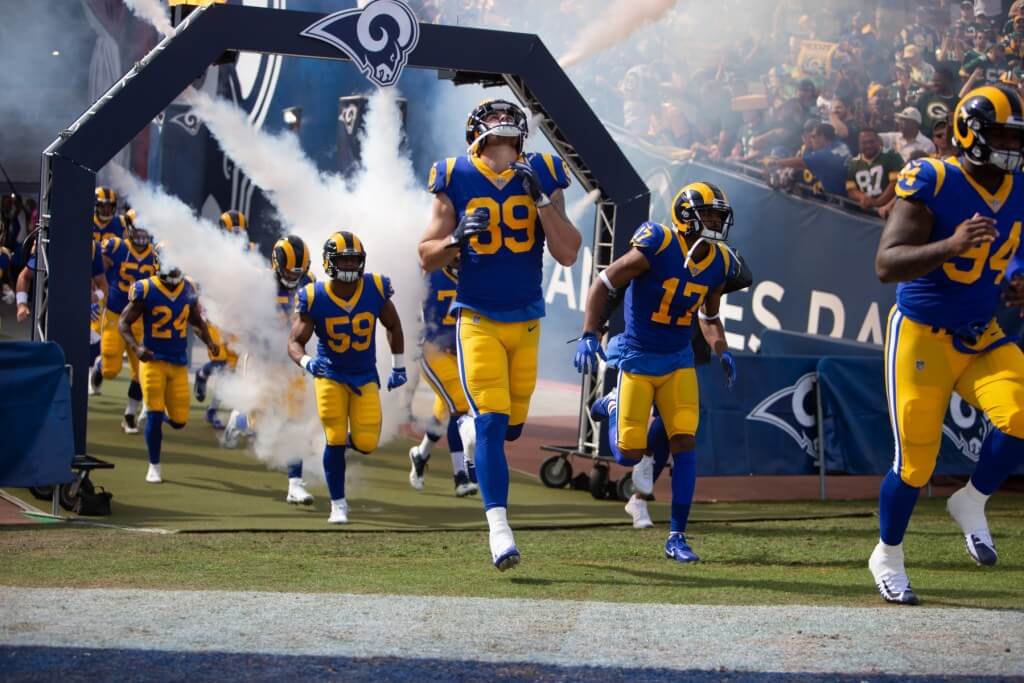
The timeout rules can vary between different football leagues and levels of play.
Here are some of the key differences:
- College football – Teams get 3 timeouts per half rather than 3 per game. This allows coaches more flexibility to stop the clock and make adjustments.
- High school football – Each team typically gets 3 timeouts per half, similar to college. Some states may have slightly different rules.
- Professional football – The NFL allows 3 timeouts per half per team, while the CFL grants only 1 timeout per half. This forces CFL coaches to be more judicious.
- Arena football – Teams are granted 2 timeouts per half. The faster pace of arena football limits timeout usage.
- Youth football – Timeout allotment can vary by league age group and local rules. Often each team gets 2 or 3 per game.
So while most leagues follow the standard 3 timeouts per game in the NFL, college football grants more flexibility with timeouts resetting each half. Professional and youth leagues may have fewer timeouts to work with. Knowing the specific timeout rules is important for coaches in developing smart timeout strategy.
Conclusion
Timeouts are an important strategic element in football. As we’ve covered, each team receives three timeouts per half that they can use whenever the game clock is running or stopped. These team-charged timeouts last up to one minute and allow teams to stop the clock to strategize, rest, or tend to injuries.
Official’s timeouts and injury timeouts can also occur, stopping the game clock temporarily. Teams must be judicious in using their three timeouts, as improper timing can leave a team unable to stop the clock late in a half. Timeouts also vary slightly between the NFL and NCAA rules.





